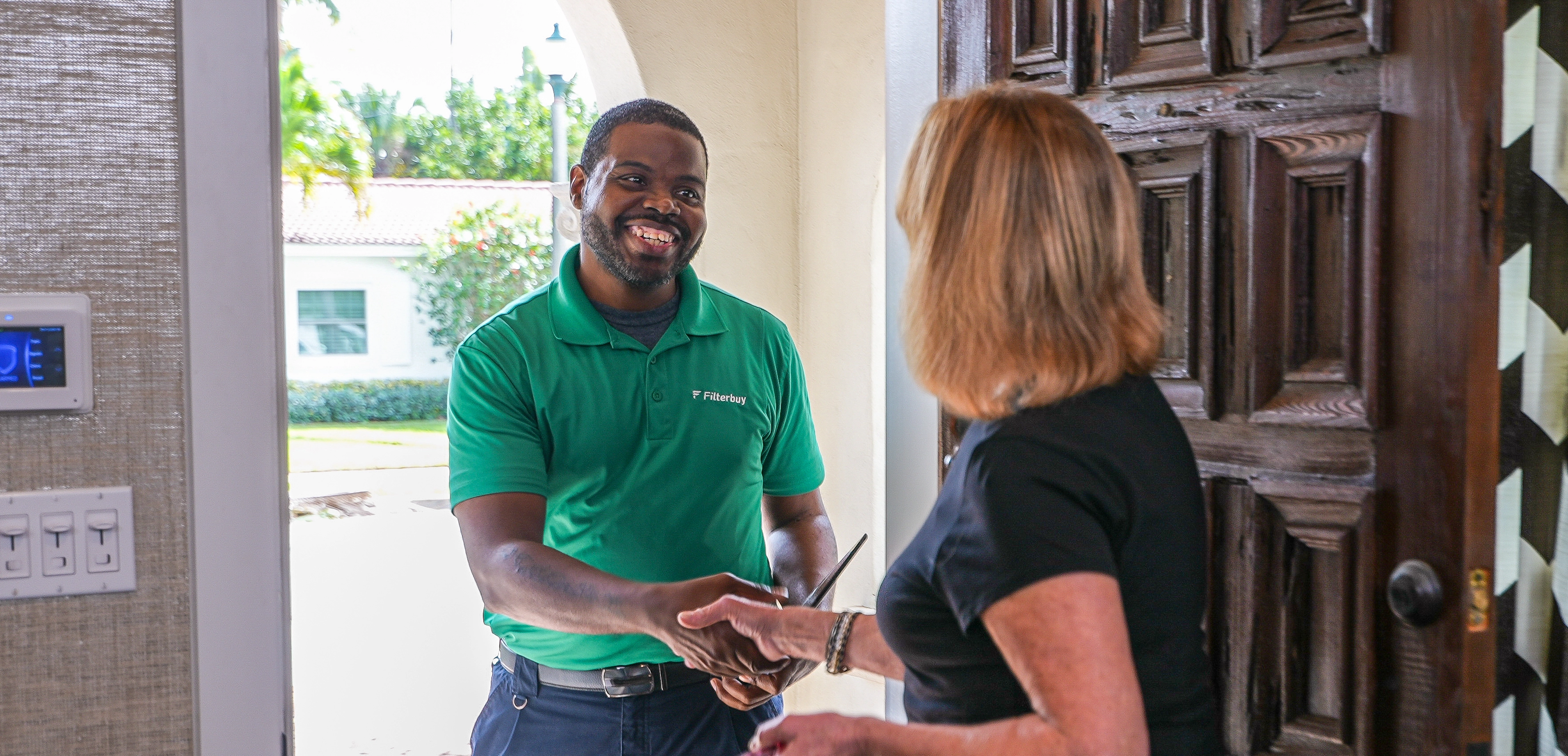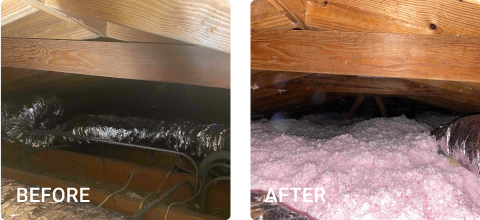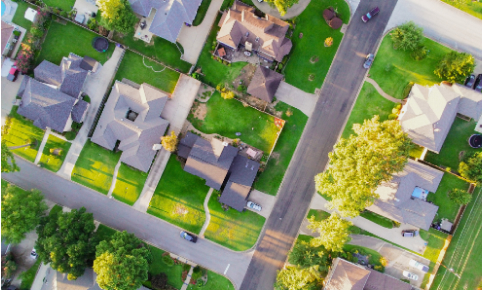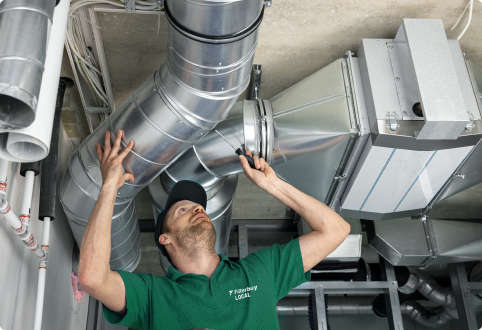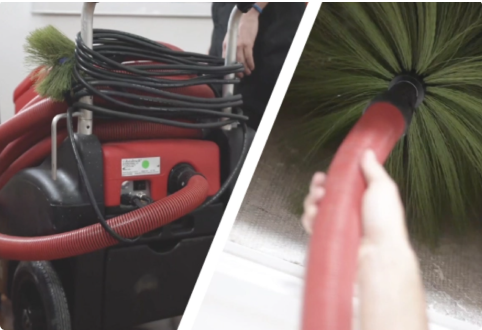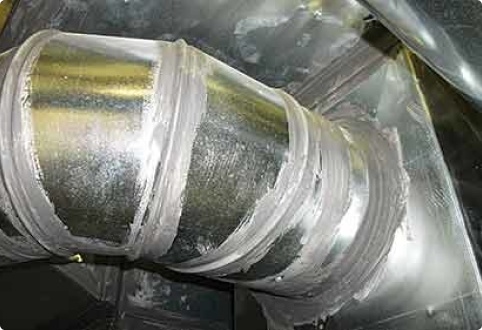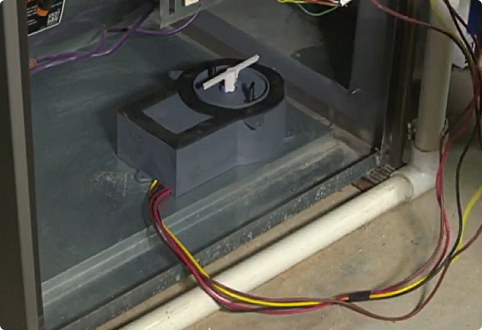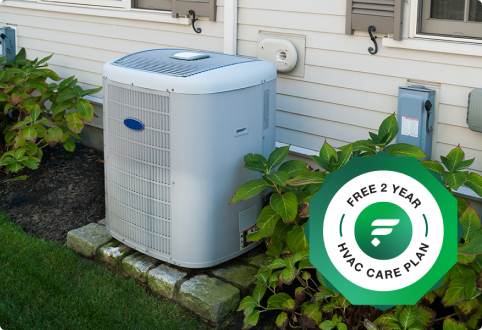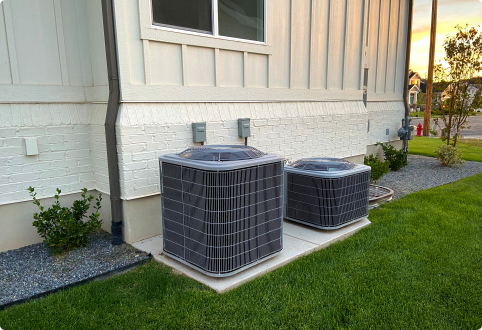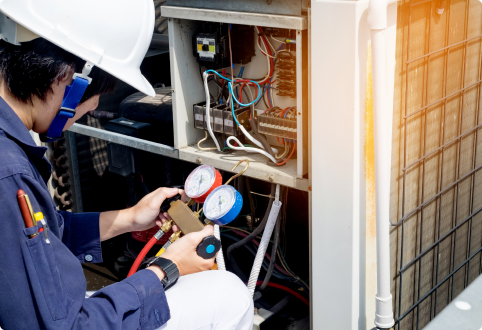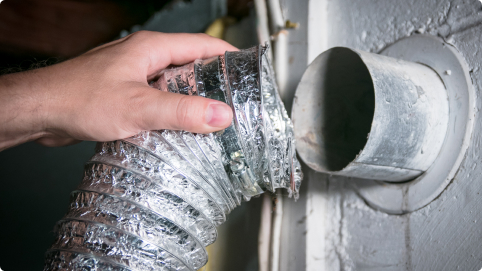Welcome to Filterbuy HVAC Solutions, the best attic insulation installation service company proudly serving in and near the greater Miami, FL area. Please let us know how we can help solve your Miami attic insulation installation needs with professional, affordable, and fast residential and commercial HVAC services by getting a free online quote or by giving our friendly HVAC specialists a call. We look forward to hearing from you!
Attic Insulation Installation Services Miami FL
Attic insulation installation services in Miami, Florida are an important part of home energy efficiency. Properly installed attic insulation can help to reduce heating and cooling costs while providing a comfortable living environment all year round. This article will provide information on the importance of attic insulation installation, as well as the types of services available in Miami FL.
Attic insulation plays an essential role in improving the energy efficiency of a household. It helps to maintain warm temperatures during winter months and cool temperatures during summer months by preventing heat transfer from outside air into interior spaces or vice versa. In addition, it also reduces sound transmission between rooms within a house as well as from one house to another. Furthermore, proper attic insulation installation ensures that no moisture can enter the house through its roofing system, thus protecting against damage caused by mold growth.
For homeowners looking for professional assistance with their attic insulation needs in Miami FL, there are several companies offering quality installation services at competitive prices. These services range from basic fiberglass batt installations to more advanced spray foam applications which can provide superior protection against thermal losses due to extreme weather conditions such as high winds or heavy rains common in this region of Florida. Additionally, many of these businesses offer warranties on their workmanship and products so customers have peace of mind knowing they are getting the best service possible.
Benefits Of Insulating An Attic
Insulating an attic can offer homeowners a range of benefits, from improved energy efficiency to increased comfort in the home. Like putting on a warm jacket, adding insulation to an attic is like wrapping your house in a protective layer that helps keep the temperature inside comfortable and consistent. By insulating an attic, it's possible to improve both thermal performance and soundproofing throughout your home.
One major benefit of insulating an attic is its ability to save you money on heating and cooling costs. Installing adequate levels of insulation will help prevent heated air from escaping through the roof during winter months while keeping cool air indoors during summertime. This process creates a buffer between external temperatures which ultimately reduces your reliance on costly HVAC systems. Additionally, proper insulation also allows for better airflow within the home since less conditioned air is being lost through uninsulated walls or attics.
Not only do insulated attics provide superior protection against extreme weather conditions but it also improves indoor comfort by blocking out outside noise such as traffic sounds or loud neighbors. Insulation acts as a barrier between outside disturbance and the interior environment creating a more tranquil atmosphere where occupants can relax without distractions from external sources. Furthermore, insulation helps reduce dust infiltration which makes it easier for those with allergies to breathe freely without fear of triggering their symptoms.
In summary, there are numerous advantages to insulating an attic including enhanced energy efficiency, improved comfort levels, and increased soundproofing capabilities; all resulting in significant savings for homeowners over time. As these benefits demonstrate, investing in quality attic insulation provides long-term payback worth considering when seeking ways to upgrade your home’s efficiency and overall livability factors. Moving forward we'll discuss the types of attic insulation available today so you can make an informed decision based on your needs and budget requirements.
Types Of Attic Insulation
Attic insulation is essential for maintaining a comfortable temperature in homes, as well as reducing energy costs by creating an effective barrier against heat gain and loss. Several types of attic insulation serve different purposes:
1. Blown-in Insulation - Blown-in insulation consists of small particles or fibers that are sprayed into the attic using special equipment. This type of insulation is usually made from cellulose, fiberglass, or mineral wool which helps to reduce air leakage and provide better soundproofing than most other materials.
2. Rigid Foam Board Insulation - Rigid foam board insulation comes in sheets and can be installed directly onto the joists or walls of the attic space. It provides excellent thermal resistance and prevents moisture buildup in the area due to its waterproof nature. Additionally, it will not shrink over time as some other insulation types may do.
3. Spray Foam Insulation - Spray foam insulation is applied with a spray gun and expands quickly upon application to fill small gaps and cracks between framing members, thus ensuring maximum coverage of your attic space. It also has good insulating properties which help maintain consistent temperatures throughout all seasons.
4. Loose Fill Insulation - Loose fill insulation is similar to blown-in but is composed of individual pieces rather than fine particles or fibers; it typically includes cellulose, fiberglass, rock wool, cotton batting, or polystyrene beads amongst others. Unlike rigid foam boards, the loose fill can be added in areas where there isn’t much room such as cavities between beams or around ducts without having to cut large holes within the wall structure itself.
All these types have their advantages making them suitable for various applications when considering attic insulation installation services in the Miami FL area. Each material offers slightly different levels of performance so proper research needs to be done beforehand to select the best option for your home's unique requirements regarding cost efficiency and comfortability level desired within the living spaces below the insulated attic floorboards. With this information at hand, homeowners can make an informed decision about what kind of insulation works best for their specific situation before moving forward with any installation service project. The next step would be looking into costs associated with each type of material chosen for use to determine the total budget needed before beginning any renovation work on site.
Costs Of Insulation Installation
The costs of insulation installation vary depending on the type and amount of material required. Depending on the size and scope of an attic, different methods may be needed for a complete job. For example, blown-in or loose-fill fiberglass is typically cheaper than batt fiberglass, but it requires more labor to install. Insulation contractors also charge varying rates based on their experience level, so it’s important to research potential companies before hiring one.
Additionally, local building codes often require permits and inspections when installing insulation in an attic space; this can add significant cost to a project. Other factors that influence price include access difficulty (e.g., if obstructions are blocking the area) as well as any other special considerations such as mold removal or air sealing services. Homeowners should ensure they are aware of all these possible expenses before beginning work.
It is beneficial to hire a qualified professional for insulation installation due to their expertise and knowledge about proper procedures for safe and effective installations. Professional technicians will have the tools necessary for accurate measurements and efficient implementation of materials, providing customers with peace of mind that their investment has been installed properly.
Advantages Of Professional Services
Installing attic insulation requires experienced professionals with the right tools and knowledge. Professional services provide numerous advantages, including:
* Knowledge of local building codes
* Access to quality materials
* Expert installation techniques
Professional installers are knowledgeable in local building standards and regulations. They understand what types of materials can be used safely and effectively to meet all requirements. Additionally, they have access to higher-quality insulation than those available at retail stores. Quality products ensure better fit and more efficient energy savings over time. Furthermore, professional installers are skilled in proper installation techniques that will maximize the efficiency of the product being installed. These include sealing off spaces around windows or doors where air loss may occur, as well as adding a vapor barrier for moisture control.
Lastly, proper ventilation is essential for keeping an attic cool during hot summer months and preventing mold growth from excessive humidity buildup throughout the year. Professionals take into account factors such as roof slope, soffit size, ridge venting, turbine vents, and eave baffles when designing an effective attic ventilation system. This ensures maximum comfort levels in both warm and cold temperatures while extending the life of your attic insulation investment.
By taking advantage of professional services for attic insulation installation, homeowners receive peace of mind knowing their home has been properly insulated according to industry standards. The benefits provided by these experts far outweigh any costs associated with hiring them – making it a wise decision overall. With this preparation complete, homeowners can look forward to preparing their attics for installation.
Preparing An Attic For Installation
Before installing attic insulation, the area must be properly prepared. This includes evaluating the existing condition of the space and determining any necessary repairs or updates that need to be completed before installation begins.
One key component of preparing an attic for insulation is assessing air sealing needs. Air sealing can help reduce energy loss from gaps between a building’s framing members and other penetrations such as pipes and wires. Sealing these areas with caulk and weatherstripping are cost-effective ways to improve overall energy efficiency in a home.
In addition to air sealing, it is important to inspect structural components including beams, ceilings, rafters, floor joists, and wall studs. Any damaged materials should be replaced before insulation installation. Additionally, vents should also be inspected for signs of damage or blockage due to debris building up which may require cleaning or repair services by a qualified contractor.
With proper preparation complete, homeowners can move forward with confidence knowing they have taken the steps necessary to install their new attic insulation successfully and safely.
Safety Measures To Consider
When it comes to attic insulation installation, safety is critical. Before any work begins, homeowners should consider the following measures:
1. Ensure a certified installer - Homeowners need to choose an experienced, certified professional who has experience installing attic insulation and understands local building codes.
2. Secure proper permits - Homeowners may require certain permits from their local authorities before beginning the project. An experienced contractor can help secure these permits to ensure everything complies with all applicable standards.
3. Check existing conditions - In addition to ensuring that all building codes are met, it is also important for contractors to inspect the existing conditions of attics before beginning any work to make sure they are safe enough for employees and materials alike.
4. Use protective equipment- Proper safety gear such as gloves, goggles, hard hats, and respirators should be worn by workers at all times while on the job site to protect them from injury or illness due to airborne particles or dust that could be present during the installation process.
By considering these steps when preparing for attic insulation installation services, homeowners can rest assured that their project will be completed safely and efficiently. Choosing the right professional installer is essential for achieving a successful result.
Choosing The Right Professional Installer
Selecting the appropriate professional installer is a critical step when seeking attic insulation installation services in Miami, FL. It can be difficult to know which contractor to trust for this important job. To ensure that your home remains energy efficient and comfortable all year long, it is wise to do some research on potential installers before making a decision.
One of the most effective ways to find an experienced attic insulation installer is through customer referrals or reviews. Checking online ratings and reading comments from former customers offers insight into how reliable and knowledgeable each contractor may be. Additionally, looking at license information provided by local regulatory bodies can help you determine whether or not a particular company has the necessary qualifications to provide quality service.
When selecting an installer, it is essential to ask questions such as: How much experience does the individual have? What kind of guarantee comes with their work? Are they able to complete the project promptly? By taking these steps beforehand, homeowners will have peace of mind knowing that the right installer was chosen for their attic insulation installation needs. The next section outlines different methods for insulating attics in Miami, FL.
Different Methods For Installing Insulation
Insulation installation is a complex process that requires special tools, materials, and expertise. The various methods of insulation installation available in Miami FL include batt, loose-fill, and spray foam insulation. Batt insulation consists of pre-cut sections made from fiberglass or other material which are installed between rafters to create an airtight seal against heat loss or gain. Loose-fill insulation uses small pieces of the same material as batt insulation but is much easier to install into difficult spaces such as corners and around pipes due to its lightweight and flexibility. Spray foam insulation utilizes polyurethane foam, applied with a specialized gun, which expands on contact with surfaces to provide superior protection even in hard-to-reach areas. Each method has distinct advantages depending on the needs of the homeowner and the requirements of their particular space.
All three methods require professional installation for proper performance, although each can be done relatively quickly once all necessary preparations have been taken care of. Preparations may include sealing any cracks or gaps near where the insulation will be placed to ensure maximum efficiency. Properly installing attic insulation can result in lower energy costs over time by creating an effective barrier against outside temperatures while also helping maintain comfortable indoor temperatures year-round. With these benefits come some considerations when choosing what type of insulation works best for one's individual needs; understanding different methods for installing attic insulation helps make this decision easier and more informed.
Aftercare And Maintenance Tips
After attic insulation installation, there are some key tips to follow to ensure the best performance. One of them is ventilation. Proper air circulation helps keep temperatures down and prevents mold growth. Additionally, all vents must be sealed properly so that no warm or cold air can escape through any gaps or cracks. Inspecting the area regularly for any signs of wear or damage should also be done as needed.
The second tip for aftercare and maintenance involves keeping debris away from the insulation material itself. This includes leaves, branches, dust, pollen, and other materials which could reduce its effectiveness over time if left unattended. It is recommended to clean this type of buildup regularly with an appropriate vacuum cleaner attachment designed specifically for use in attics.
Finally, check-ups should be conducted by professionals every few years to ensure optimal performance and safety standards have been met throughout the life of your attic insulation system. This may involve inspecting areas such as wiring, ducts, and lighting fixtures for potential hazards as well as ensuring that the correct amount of insulation has been installed according to local building codes. When installing attic insulation, it's important to understand applicable local laws and regulations before beginning work.
Local Laws And Regulations
When considering attic insulation installation services in Miami, FL, it is important to take into account local laws and regulations. Homeowners must ensure that their chosen service provider follows all applicable codes when completing the job. It is also beneficial for owners to be aware of any permits or permissions required by the city or county before commencing work on an insulation project. Understanding these requirements can help homeowners avoid costly delays further down the line.
To begin with, many different building codes apply to attic insulation installations within Miami-Dade County. Licensed contractors should be familiar with all relevant codes and safety standards related to such projects to complete the job safely and efficiently. In addition, depending on where a home is located, certain environmental considerations may need to be taken into account when selecting materials for use in an attic insulation installation. This could include factors like humidity levels and extreme temperatures which may affect how specific types of materials perform over time.
It is also possible that additional permissions from local authorities may be needed before starting work on an attic insulation project in Miami, FL. Depending upon the scope of the project, this could range from simple zoning compliance checks to obtaining full construction permits from the city or county government offices responsible for overseeing residential development work. By being aware of these potential requirements ahead of time, homeowners can better prepare themselves for any paperwork they might need during their installation process.
Frequently Asked Questions
What Is the Best Insulation for the Attic in Miami?
The best insulation for an attic in Miami, Florida would be spray foam insulation. This type of insulation creates a strong seal in your attic and has a high R-value, meaning it provides superior insulation properties. It is also resistant to moisture, which is crucial in a humid climate like Miami's.
How Much Does It Cost to Insulate an Attic in Florida?
The cost to insulate an attic in Florida can vary widely, based on the size of your attic and the type of insulation you choose. On average, you can expect to pay between $1.50 and $3.50 per square foot for professional installation of insulation. Keep in mind that spray foam insulation, while very effective, tends to be more expensive.
Is Attic Insulation Worth It in Florida?
Yes, attic insulation is worth it in Florida. Despite the state's warm climate, insulation can help keep your home comfortable year-round by reducing heat transfer. It can also save you significant money on your energy bills in the long run.
How Thick Should Attic Insulation Be in Florida?
The thickness of attic insulation in Florida should ideally be around R38, or about 10 to 14 inches thick. This will provide adequate thermal resistance to keep your home comfortable without over-insulating.
What Is the Best Way to Insulate an Attic in Florida?
The best way to insulate an attic in Florida is to use a combination of spray foam insulation for its superior sealing and insulating properties, and traditional fiberglass or cellulose insulation for its cost-effectiveness and ease of installation.
What Is the Recommended Attic Insulation in Florida?
The recommended attic insulation in Florida is typically R38. This allows for optimal energy efficiency in the state's warm climate without over-insulating, which can cause its own set of problems.
What Type of Attic Insulation Is Best?
Spray foam insulation is generally considered the best type of attic insulation. It seals air leaks and has a high R-value, meaning it insulates very well. However, it's also more expensive than other options.
What Is the Cheapest Way to Insulate an Attic?
The cheapest way to insulate an attic is typically to use blown-in cellulose or fiberglass insulation. These materials are relatively inexpensive and can be installed fairly easily.
What Are the Disadvantages of Attic Insulation?
Some disadvantages of attic insulation include the potential for moisture issues if not properly installed, the cost of installation, and the possibility of animal infestations. Additionally, some types of insulation can deteriorate over time or be damaged by pests.
Should I Insulate My Entire Attic?
Yes, you should insulate your entire attic. This includes the attic floor, the rafters, and any exposed wall space. Insulating the entire space helps prevent heat transfer, keeping your home more comfortable and reducing energy costs.
How Hot Is an Attic in Florida?
An attic in Florida can get extremely hot, often exceeding 150 degrees Fahrenheit in the summer months. This intense heat can make your home uncomfortable and increase your cooling costs.
How to Cool an Attic in Florida?
To cool an attic in Florida, start by ensuring it is properly insulated. Then, consider installing a radiant barrier to reflect heat away from your home, and make sure your attic is properly ventilated to allow hot air to escape.

.webp)
.webp)
.webp)
.webp)






